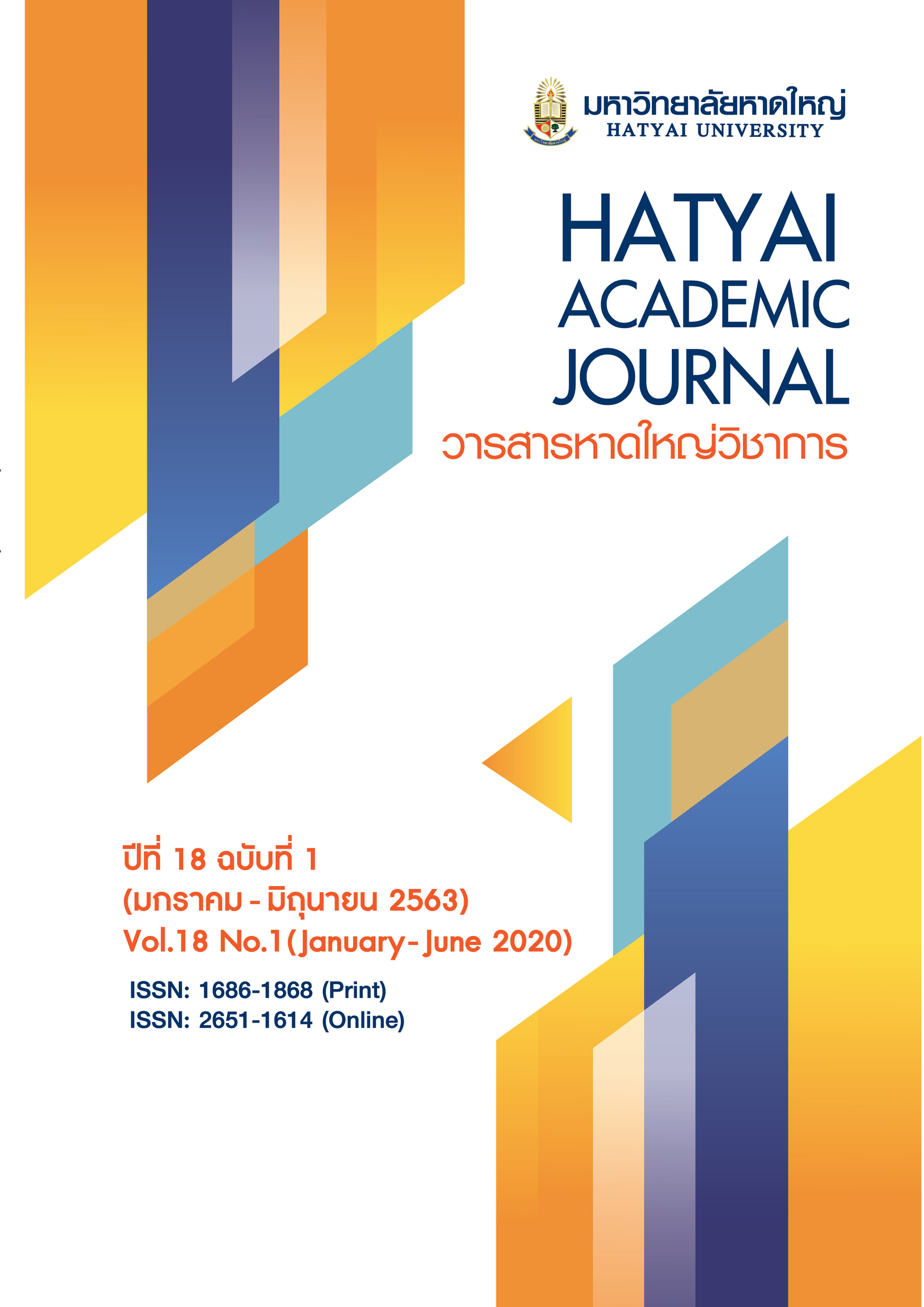An Indicator Development of Effective School Management in the Eastern Region of Thailand
Main Article Content
Abstract
The purposes of this research were: 1) to construct indicators of effective school management and 2) to validate the constructed validity of a measurement model of factor analysis indicators. The population was school teachers under the authority of the Office of Primary Education Area in the eastern region of Thailand. By the use of a stratified random sampling technique, the sample size (respondents/teachers) of this research was 849; 400 arranged for answering Exploratory Factor Analysis (EFA) questionnaires and 449 for Confirmatory Factor Analysis (CFA). The research instrument was questionnaires used for validating the hypothesized model. The Exploratory Factor Analysis (EFA) result showed that there were five underlying factors presented in this model consisting of the factor with the highest mean score: the administrators’ leadership and good governance skills (= 4.70, SD = .51). The second highest was professional administrators (
= 4.63, SD = .55), followed by student-centered learning management process (
= 4.62, SD = .54). The lowest mean score was that of item CUR2: publishing curriculum (
= 3.92, SD = .76). The result of Confirmatory Factor Analysis (CFA) showed that the model was congruent with the empirical data. The Chi-square’s value was 461.42 with a p-value of .10, holding a degree of freedom of 424, and that of RMSEA of .014. The most affecting factor was teacher training (.86) followed by monitoring, evaluation, and supervision (.78); academic administration (.76); curriculum development (.76); and the efficiency of school administrators (.60). The factor loading value was arranged in rank between .53 to .83.
Article Details
All published articles are evaluated by three qualified peer reviewers from various institutions through a double-blind process, where reviewers do not know the authors’ identities and authors do not know the reviewers’ identities. The content and articles in the Hatyai Academic Journal reflect the authors’ views only and are neither the opinions of the editorial board nor the responsibility of Hatyai University. The Editorial Board of the Hatyai Academic Journal allows articles to be reproduced for academic purposes, on the condition that the original source is clearly cited.
References
Barber, M., & Mourshed, M. (2007). How the world’s best-performing school systems come out on top. London: McKinsey.
Buyukgoze, H. (2016). Understanding effectiveness in school administration: A discourse analysis. Journal of Acta Didactica Napocensia Issues, 9(3), 67-76.
Cuttance, P. (2006). An evidence-based approach to school innovation and improvement. Florence, KY: Routledge.
David, J. K., & Terry, L. J. (2004). Effective schools: Assessment report. Additional copies of this and related documents are available. Pearson Inc.
Educational Service Area Office Standard. (2017). Office of Educational Service Area. Bangkok: Agricultural Cooperative Assembly of Thailand. [in Thai]
Leithwood, K. (2006). Teacher working conditions that matter: Evidence for change. Toronto: Elementary Teachers’ Federation of Ontario.
Measurement, Learning & Evaluation Project. (2013). Measuring success toolkit: Sample outline of an M&E plan. Retrieved from www.urbanreproductivehealth.org/toolkits/ measuring-success/sample-outline-me-plan. [in Thai]
McLaughlin, T. (2005). The educative importance of ethos. Journal of British Educational Studies Issues, 53(1), 306-325.
Muhammad, F., A., G. (2008). School effectiveness and improvement practices in excellent schools in Malaysia and Brunei. Journal of Procedia Social and Behavioral Sciences Issues, 15, 1705-1712.
National Education Act. (1999). Education, vocational guidance and training. Retrieved from https://asean.org/wp-content/uploads/2016/08/Thailand184.pdf [in Thai]
Office of Educational Strategy. (2016). Manual for quality assessment of schools under the Bangkok Metropolitan Administration (SMART School) for the year 2016. Retrieved from http://www.thaischool.in.th/_files_school/10140017/document/10140017_0_2016 0603-000707.pdf [in Thai]
OPM’s divisions. (2019). A handbook for measuring employee performance. Office of Personnel Management Employee Services. NW.: Washington DC.
Phahamak, W. (2018). Causal relationship of effectiveness of small-sized schools under the office of basic education commission. Journal of Suratthani Rajabhat Issues, 5(1), 211-239. [in Thai]
Pholphirul, P. (2016). Pre-primary education and long-term education performance: Evidence from programed for international student assessment (PISA) Thailand. Journal of Early Childhood Research Issues, 15(3), 305-322. [in Thai]
Sanamthong, E. (2017). Causal model of transformational leadership influencing organization engagement and organizational citizenship behavior of the employees in academic fields of the “Knowledge market” type of Universities in Thailand. International Journal of Applied Business and Economic Research Issues, 15(2), 769-786. [in Thai]
Starrett, T. M. (2015). Principal perceptions of walkthrough effectiveness. Journal of School Leadership Issues, 28(2), 44-51.
Taengkhao, P. (2013). A development of effectiveness indicators of high-competitive secondary schools under the Office of Basic Education Commission. Journal of Educational Administration, Burapha University Issues, 7(2), 82-95. [in Thai]
The Center on Innovation and Improvement. (2012). The resources below may be of interest to you. Retrieved from www.centerii.org [in Thai]
The International Association of Laboratory Schools (IALS). (2016). IALS was formerly NALS. Retrieved from http://www.laboratoryschools.org/ [in Thai]
Vanichbuncha, K. (2013). Factors that affect buying decision on mobile comic of students in Thailand. MUT Journal of Business Administration Issues, 9(1), 98-109. [in Thai]
Westbrook, J. A., & Braver, T. S. (2013). The economics of cognitive effort. Journal of Behavioral and Brain Sciences Issues, 36(6), 661-679.
Zufiaurre, B., & Wilkinson, J. (2014). School leadership: Is a shift from efficient management to social justice possible. Journal of Perspectiva Educacional. Formacion de Profesores, 53(1), 114-129.

